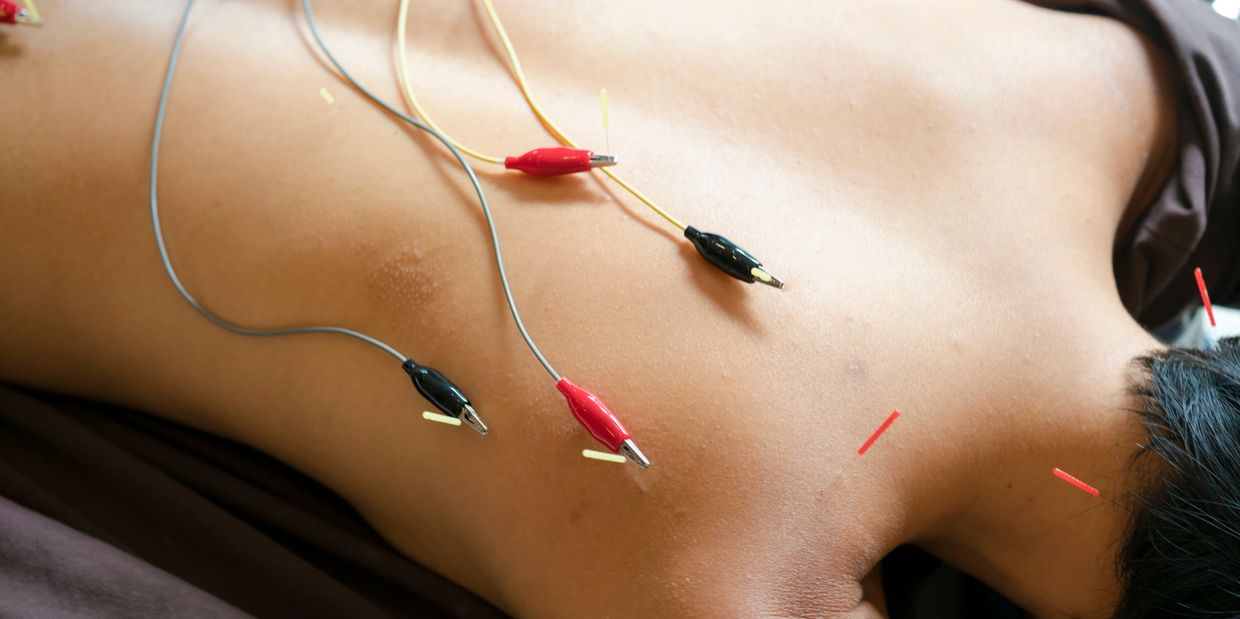
Exploring Dry Needle Therapy: A Powerful Comprehensive Treatment for Pain Relief and Muscle Recovery
Dry needling is a specialized therapy designed to alleviate muscular pain, improve mobility, and
enhance healing. It is widely used by physical therapists, chiropractors, and other healthcare
professionals to treat a variety of musculoskeletal issues. Whether you're dealing with chronic
pain, sports injuries, or muscle tension, dry needling could be a valuable treatment option to help
you get back to feeling your best.
What is Dry Needling?
Dry needling is a technique where thin, solid needles are inserted into specific " trigger point" or
muscle knots in the body. These trigger points are often the source of pain, tightness, and
restricted movement. Unlike acupuncture, which is based on traditional Chinese medicine, dry
needling targets these muscle knots to release tension, promote blood flow, and activate the
body’s natural healing response. The term “dry” refers to the fact that the needles used do not inject any substance, unlike “wet”
needling techniques. The primary goal of dry needling is to relieve muscle pain and improve
function in the affected area.
How Does Dry Needling Work?
When the needle is inserted into a trigger point, it stimulates the muscle tissue and causes a small
“twitch” response, which is a sign that the muscle is relaxing. This process helps to break the
cycle of pain and muscle tightness, leading to improved blood flow, reduced inflammation, and
enhanced healing. In turn, this helps the body recover from injury and reduce the severity of
chronic pain.
What Conditions Can Dry Needling Treat?
Dry needling is effective for a wide range of musculoskeletal conditions, including:
* Chronic Pain: Conditions such as fibromyalgia, myofascial pain syndrome, and other chronic pain disorders.
* Sports Injuries: Sprains, strains, and other soft tissue injuries caused by overuse or trauma.
* Back and Neck Pain: Pain related to muscle tightness, spinal misalignments, or posture issues.
* Headaches: Tension-type headaches and migraines can be treated with dry needling to reduce muscle tension.
* Joint Pain: Dry needling can assist in reducing pain caused by conditions like osteoarthritis.
* Post-surgery Rehabilitation: To reduce pain and enhance recovery after surgery or injury.
The Benefits of Dry Needling
1. Pain Relief: One of the main benefits of dry needling is its ability to reduce muscle pain and discomfort quickly.
2. Increased Range of Motion: By releasing muscle tightness, dry needling can restore flexibility and mobility in restricted areas.
3. Faster Healing: Stimulating the body’s natural healing process helps to promote faster recovery from injuries.
4. Reduced Muscle Tension: By targeting trigger points, dry needling can alleviate chronic muscle stiffness and tension.
5. Non-invasive: Dry needling is a minimally invasive procedure with few risks and side effects when performed by a trained professional.
Is Dry Needling Right for You?
Dry needling is suitable for many people suffering from musculoskeletal pain and dysfunction.
However, not everyone may be a candidate for this treatment. It is important to consult with a
healthcare provider who is trained in dry needling to determine whether it is the right option for
your specific needs and condition.
What to Expect During a Dry Needling Session?
During a dry needling session, your therapist will first assess your condition and identify the
muscle areas that need treatment. Once the appropriate trigger points are located, the therapist
will insert a thin needle into the muscle, typically without causing significant discomfort. You
may experience a mild twitch or muscle contraction when the needle enters the muscle, but this
sensation is temporary and often followed by relief.
After the session, you may feel sore in the treated area for a day or two, similar to the feeling
after a deep tissue massage. However, the benefits often become more noticeable as the muscle
relaxes and begins to heal.
Conclusion
Dry needling offers a safe, effective, and non-invasive way to address muscle pain, improve
movement, and promote healing. Whether you're dealing with a sports injury, chronic pain, or
simply tight muscles, this technique could be a valuable part of your recovery plan. Always seek
treatment from a licensed healthcare professional who is trained in dry needling for the best
results.
If you're interested in exploring dry needling therapy, contact us today to schedule a consultation
and discover how this powerful technique can help you feel better and move better.
Copyright © 2024 LA Health Services, LLC - All Rights Reserved.
This website uses cookies.
We use cookies to analyze website traffic and optimize your website experience. By accepting our use of cookies, your data will be aggregated with all other user data.